For many of us, if asked to define the term marketing, we immediately imagine some big, bold advertising and promotional adverts on tv by global brands such as Coca-Cola, Disney or HSBC.
But although all companies of all sizes need to market their services or products, not many of them can afford to spend millions on tv advertising.
Luckily for us, some of the most effective marketing campaigns are done by small companies without huge budgets.
In fact, there are some companies who do amazing campaigns with next to no budget.
The questions we are really are looking to answer here are:
- How do other companies market their products or services effectively?
- How could I market my products / services effectively?
- How can I stand out from my competitors?
But before we answer that, let’s start with the basics:
What is marketing?
Essentially, marketing is all the activity that goes behind promoting a product or service, whether it’s all or some of the following: websites, advertising, brochures, podcasts, press releases, blogs, social media marketing, sponsorships, events, pay-per-click, search engine optimisation (SEO), search engine marketing (SEM), and so on.
It is all marketing. Every contact you have ever had with a brand is a form of marketing.
Every time a company tries to tell you their story and influence your decision making,
you are experiencing marketing.
Marketing underpins every sale and will often determine the success or failure of every business.
Marketing is also an area of business which people assume just happens, rather than an essential cog in any business strategy which deserves time and attention when planning.
What’s the technical definition of marketing?
According to Lexico it’s “the action or business of promoting and selling products or services, including market research and advertising”
Hmm. Even though it’s correct, the dictionary definition of marketing misses the point.
What point does this marketing definition miss?
Well, because as humans we’re emotional beings and we need to feel spoken and listened to, directly.
The definition of marketing is technically right, but it’s generic, dispassionate and doesn’t describe the full range of elements and stages of the marketing process.
All marketing content begins with a story – a problem that needs a solution
Marketing is much more emotional than most of us realise.
A better marketing explanation is more along these lines:
‘marketing is an authentic meaningful connection unselfishly solving a customer need.’
Much better, right?
Go on…
Well, marketing is about how this action or business of promotion – or story, takes place, in order to get a positive understanding of the product to the consumer in the most effective way possible.
Marketing is so much more than promoting and selling – it’s a conversation, a relationship.
 Marketing is the whole process, or cycle, including the initial step of identifying the consumer’s lifestyle, their problem or need, to communicating effectively that you can solve the problem or need with your product or service.
Marketing is the whole process, or cycle, including the initial step of identifying the consumer’s lifestyle, their problem or need, to communicating effectively that you can solve the problem or need with your product or service.
Marketing also means ensuring that the buyer believes that what you are selling is worth paying for and valuable to their needs.
Therefore, at its core, marketing is all about communication.
In other words, building an engaging conversation between the business and the buyer in order to get the product or service desired and delivered, repeatedly.
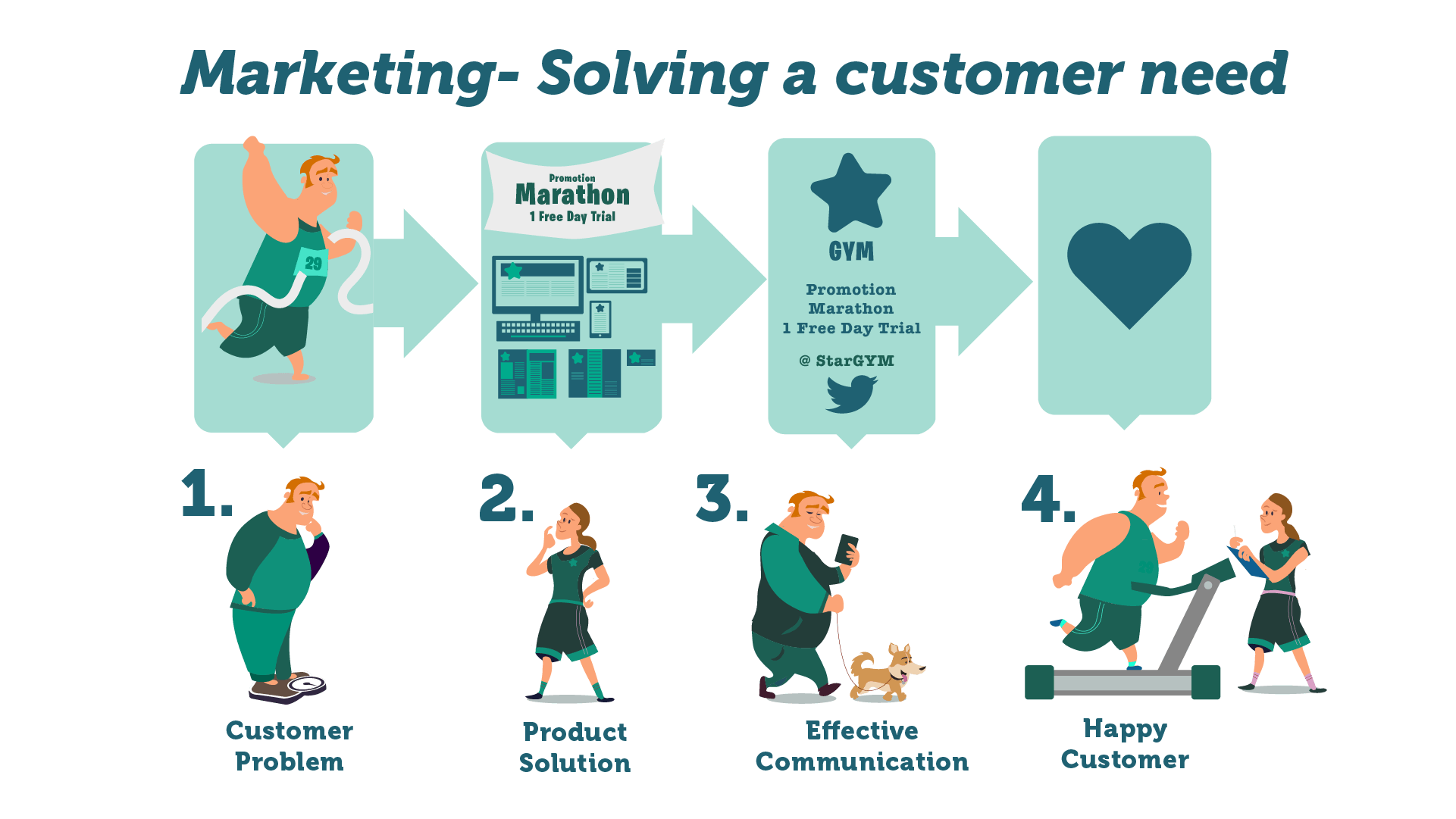
The difference between average and great marketing
Great marketing is about how well you can tell a story and the level of customer trust and loyalty you can develop.
Anybody can do average, but it takes more considered effort to be GREAT.
The difference between average and great: Research, planning and developing the art of effective communication and storytelling – we’ll talk more about that later in this article
Reduce marketing down to its core: the art of storytelling
When you watch an advert, you are watching the centuries old skill of effective communication through storytelling.
Advertising is an obvious way that a company will choose to tell you their story.
An advert might stay in your head – indeed some are truly iconic (the Cadbury’s gorilla playing the drums is a great example).
An advert bottles up a story which a brand wants you to feel and identify with.
It is story which they hope will filter through to your decision making.
Good adverts demonstrate a process of teaching the consumer why they need your product more than your competitors.
In other words, they try to create a sense of value in your head.
It is this value which keeps you buying Nike trainers, rather than Adidas.
It is this same value which keeps you buying the same coffee from your favourite coffee shop.
How do I create value if I’m not running with the big guns yet?
Relax. Size doesn’t matter here.
You don’t need to be a huge brand to get powerful content out to your audience.
You don’t need millions of pounds to create loads of value for your customers, either.
With a smart strategy, you can ensure you provide value, speaking to your customer on their terms to really encourage them to consider your brand as integral to who they want to be and where they want to go.
Luckily for us, marketing is one of the few areas where you don’t always have to be big to win big.
You do, however, need to put the customer first and build a relationship with your customer that ensures they never want to go anywhere else for the product or service.
You want to be the only choice they should be considering – not the second.
That means building your story and strategy around the relationship you want to have.
What this doesn’t mean is taking an approach of simply talking about yourself and telling people you’re great.
This approach simply doesn’t cut through, people can see what you are doing a mile off.
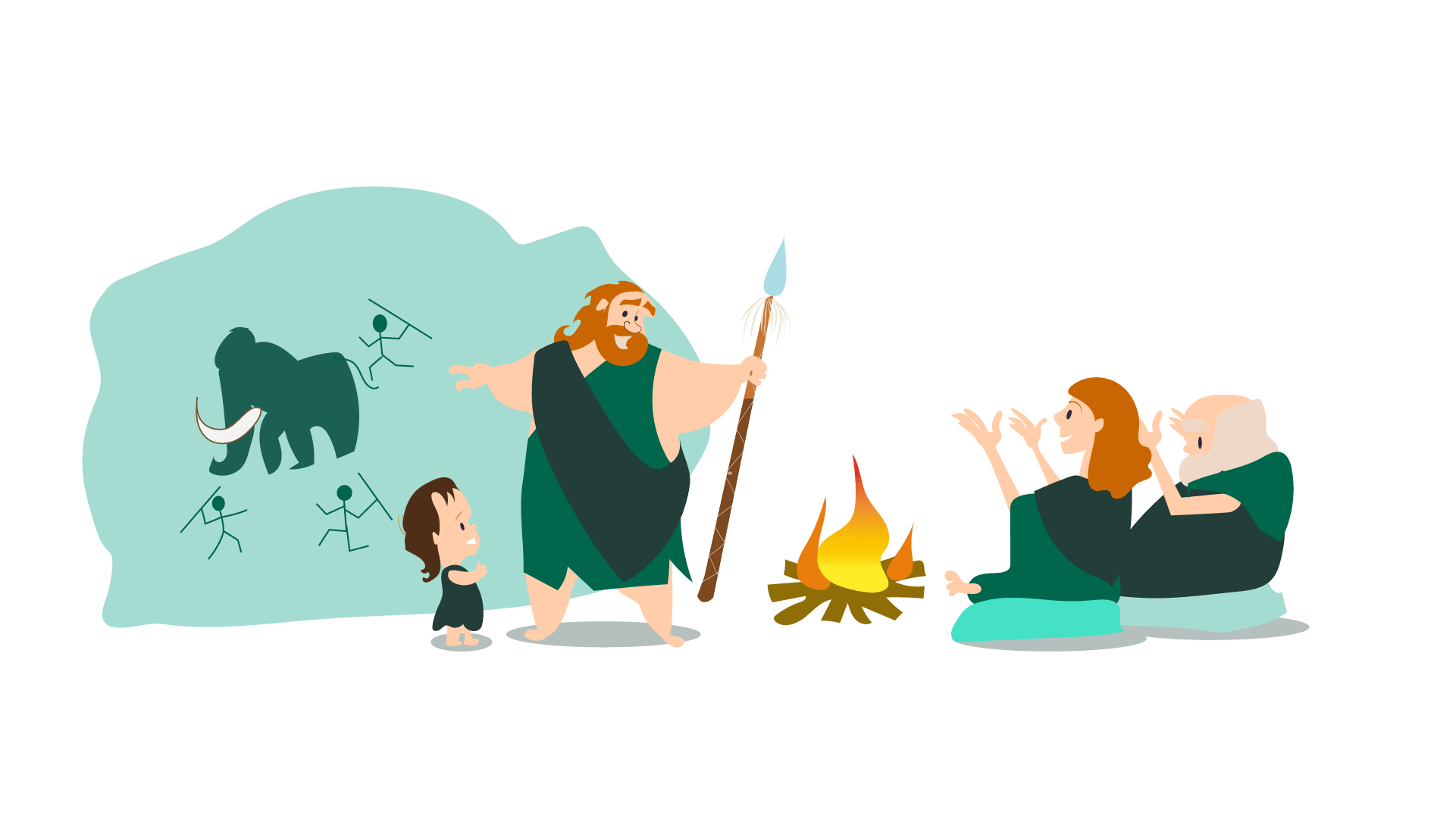 A great story = great content = getting the authentic attention of your customer = trust
A great story = great content = getting the authentic attention of your customer = trust
Every business wants to build trust between themselves and their customer.
The question is how do we do that, authentically?
Effective marketing means thinking outside the (product) box
We begin by knowing and anticipating our target consumer habits. Who are they, what makes them tick and why would they want what we’ve got to sell?
Are you talking to me?
So – before you even begin to sell, we are identifying all the little ‘yes’ buttons we can press and asking questions that from the very beginning means we are building true relationships with our customers.
Once you know who you’re speaking to and why, you can get their attention far more easily.
YES, YOU!
This also means you need to think about what the customer wants and understand how to consistently speak to them on their level. Even if they are unlikely to be making a purchase anytime soon
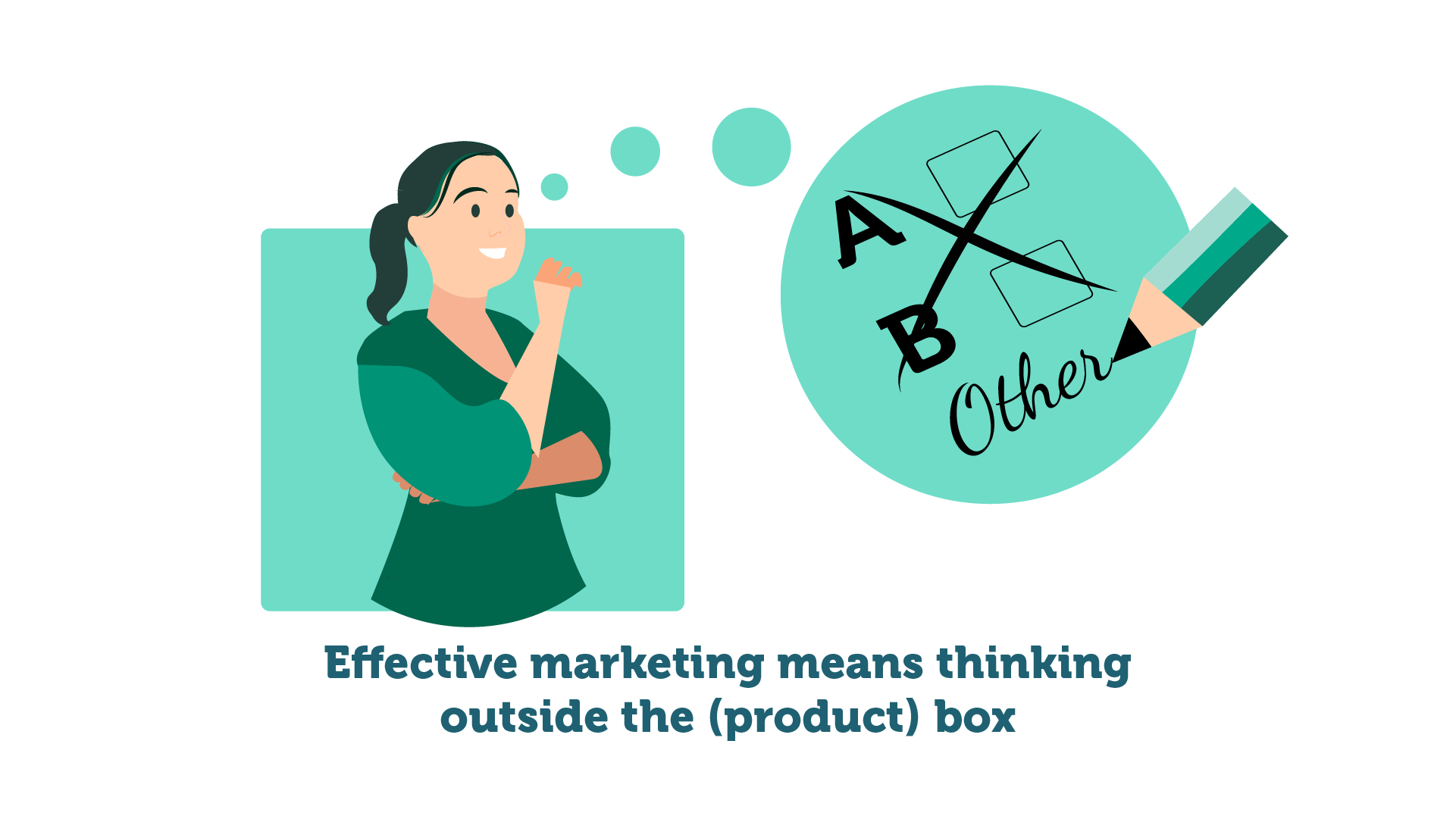
Having conversations that matter
Building an authentic conversation is crucial to the framework of your success.
Never assume people are going to be keen to simply purchase your product or service.
Even worse; never assume that people should buy from you, simply because you exist.
People need to be engaged, interested and listening to what your company has to say.
Once you’ve achieved that, you’re halfway to victory.
MP3 players – a true marketing story about building relationships
Take the MP3 player – everyone was going crazy for this little beast back in the day when it first came out.
Here’s the player my dad first bought me, the Rio Diamond Rio500 player.

It was the next big thing, but had the capacity for only seven normal songs, even less if you listened to 9 minute version of Insomnia, Faithless on it as I did (don’t judge me!)
Then along came the Apple iPod and it blew all the existing market leaders out of the water.
The iPod became the brand of the MP3 player.
Ask someone to give you an example of an MP3 player and the answer will be ‘iPod’.
It’s like no other brand ever existed.
Apple wasn’t the first to the MP3 party, their product wasn’t even the best in the market.
The iPod didn’t have the biggest storage space. It wasn’t the cheapest product in the market either.
In fact, Apple were considered an underdog back then before going on to be the one of the most valuable companies in the world.
Apple did, however, have a great story to tell and an amazing ability to connect with their customers
The story of the MP3 player isn’t one about technical prowess, it is one about great storytelling.
What made the iPod work was the story of connecting people with their love of music and being able to walk (or dance) away with it, in their pocket.
Simple, meaningful connections
Apple built a brand around a story, the story of a global love of music. The iPod’s technology was secondary to this story, meaning people bought into the powerfully persuasive ‘feeling’ it gave them, as well as a product that did the job well.
Simplicity and connection are the defining characteristics that underpin Apple’s global success.
Get the story right, and the success will find you.
The biggest brands are a result of consistency and storytelling
Loyal customers mean recommendations.
Get enough recommendations and you have the beginnings of your brand.
Before long, your company can build an identity for quality.
It doesn’t matter if you are small, even a lone builder has a brand built around what they do.
But remember this, as long as you are always providing value for your customers, then your business and brand are in a better position for success.
Building a brand identity
In order to build our own brand, we need to think about what it means to be a brand and ask ourselves some fundamental questions:
- Who do we think of when we think of big brand names?
- Why is their brand a result of the connection they are making with us?
Take a HUGE brand like Coca-Cola…
Let’s look at their product.
A fizzy sugary drink in a red and white can.
Lovely when ice cold. Not so lovely when warm. Some folk like it with whisky.
Yes! But it’s a lot more than that too, isn’t it? It’s a feeling!
Coca-Cola makes you happy, right?
They’d like to think so.
Coca-Cola is one of the most recognised companies and the biggest non-tech company in the world.
Coke’s advertising is synonymous with laughter, family, love, happiness and even (ironically) health – all of which give us a sense of natural belonging and feeling good.
The brand’s Christmas advert, launched in 2016, depicts the excitement and anticipation of the festive season for all the family, and the sentiment of sharing.
Immediately, we’re pulled in emotionally, wanting that feeling, wanting to be one of them, to be included in that group of shiny happy people.
They designed their advertisement so you connect Coca-Cola and the happiness of the Christmas period, even though the two are ultimately unrelated.
This is effective, clever marketing especially when aimed at teenagers and the young.
If you look at all of Coca-Colas marketing campaigns, they all revolve around a ‘feeling’ of sharing and happiness, generated with coke at the centre.
It is no coincidence that their recent slogan is ‘open happiness’.
To get philosophical about it – everything meaningful in life is based on an emotional connection.
Great marketing is the ability to tune into this basic human need – making those connections that we all internally need and crave.
Great marketing is about connecting with the customer
What’s clever about Apple’s iPod or John Lewis, is the true skill of their marketing is not about focussing on the product, be that a fizzy drink with a high sugar content, or some luxury sheets, but rather a more abstract concept of belonging and a positive, wholesome connection between people with the product at the centre acting as the ‘feeling baton’.
The first John Lewis Christmas advert had amazing emotional connecting power and we didn’t think about a single product throughout the entire advert.
We did think about the brand – John Lewis, as providing us with that warm, heartfelt feeling we all love at Christmas.
It’s not about the money, money, money
Even though most big brands spend millions on marketing campaigns, most companies can’t afford anything like that sort of spend.
If you could, you wouldn’t be reading this right now.
My point is your business can do the very same thing – create a desire for your product – without throwing tons of cash at an idea, just as long as you have some strategic thinking behind your marketing plan.
The importance of digital marketing
We are in a digital world, now more than ever. We expect almost everything to be available online and we live in a culture of immediacy – our needs are instantly met with a swipe of a screen or a click of a button.
Each and every day, our reliance on the web is becoming more engrained, and this digital trend isn’t going to reverse anytime soon.
In fact, I would make the argument that most businesses can’t realistically survive to today’s world unless they’ve gone digital.
The good news: digital marketing allows smaller businesses to level up with their bigger rivals
By utilising social media and emails, a smaller business can easily reach many more people with impactful content marketing than it used to.
There has never been a better time to speak to your customers.
The key benefits of digital marketing
Digital marketing means you can really focus on providing value to your customers in a focused, measurable way.
In other words, you only spend money doing things that you can see perform, you can drop any marketing that doesn’t give you bang for your buck.
Tailored marketing campaigns driven to the right audience through the right platforms can win you huge business.
Think about what you typed into Google to find this article.
Think about what you are trying to solve right now.
Then ask yourself, how can I use that same approach for my business.
In other words, you need to work out how to utilise digital marketing to create value for your customers.
Which areas does digital marketing cover?
Digital marketing is the targeting of customers over the internet and online digital technologies such as desktop, tablets, phones, iPads and via digital platforms.
There are tons of different methods of digital marketing – SEO, SEM, PPC, audio (e.g. podcasts), social media, and crucially, content marketing.
All digital marketing means attracting people into your key asset – your website and then guiding them through to the sale.
Preparation, planning, testing and measuring is crucial here – get a good process in place and you’ll be winning when it comes to number of leads, purchases and repeat purchases your site wins.
After all,“He who is best prepared can best serve his moment of inspiration.” ― Samuel Taylor Coleridge
Surely, I should just start creating stuff, chucking it out and seeing what sticks
Remember the earlier discussion about Apple?
They decided to go for quality and focused on saying what they wanted to say.
You need to think about taking the same consistent approach for your business or brand.
Anybody can churn out loads of marketing and hope for the best. There are plenty of people who will gladly help you do that, too.
I have used this same approach. I learnt the hard way that this approach works to a point, but not if you want sizeable and consistent business growth.
It is a smart, considered, value-based marketing strategy which is most likely to go the difference and give you the best return on investment (ROI).
Even if it is much harder to do, this approach will pay dividends in the long run.
Remember, it only takes one great piece of content marketing which can turn you from zero to hero.
A single video can make your brand go viral.
A great end-to-end value campaign can earn you 100x over a lacklustre product orientated campaign.
Quality is key, value is the key.
In other words, do less, but better.
Don’t settle for average, your business and you are worth so much more than that.
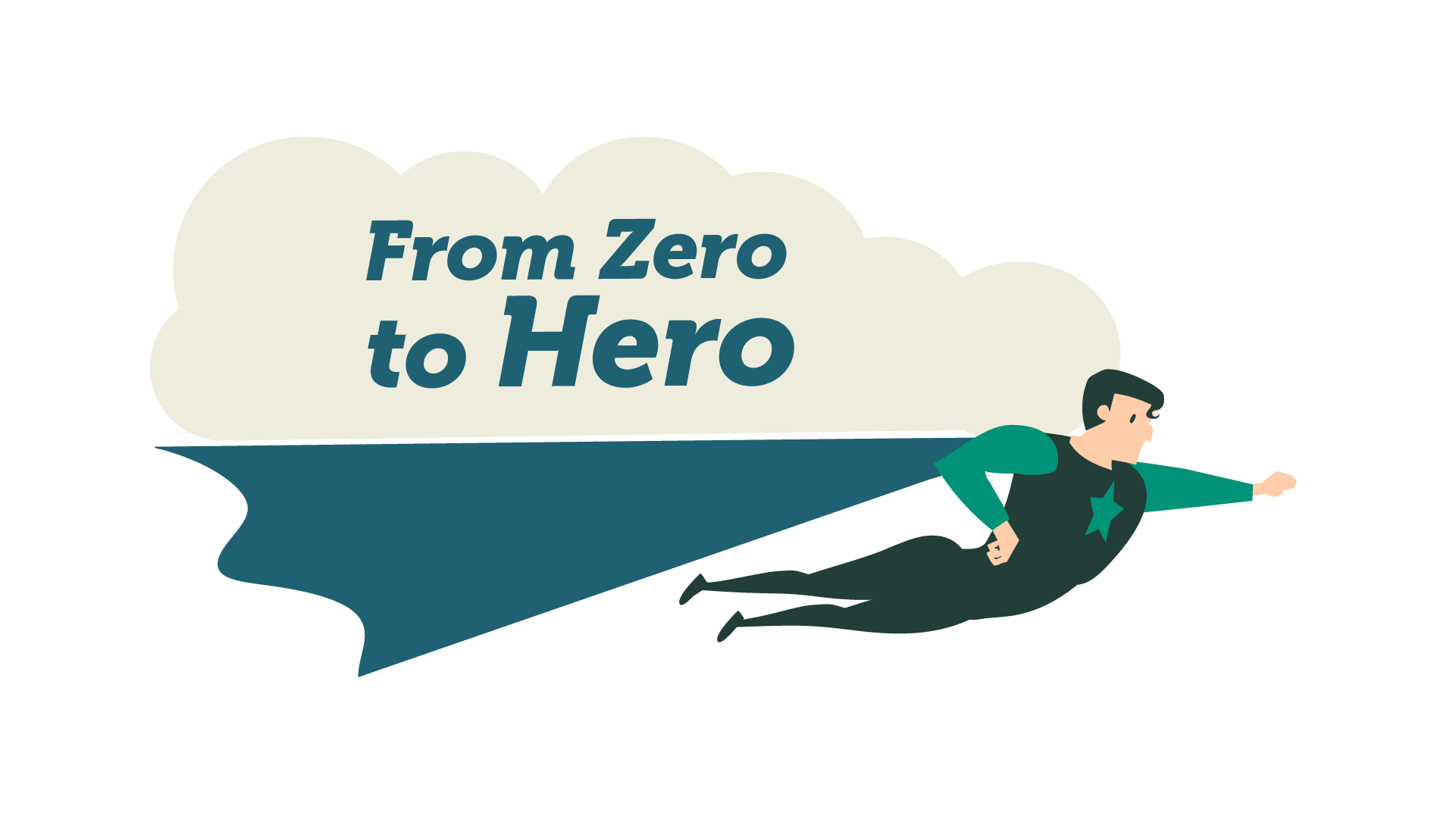
What sort of digital marketing is right for us?
It might be that your business suits all kinds of digital strategies, or it might be that one or two fit your brand and others not so much (an Instagram influencer might not be your thing if your target market is the elderly).
But remember, valuable content is everything – combine this with support from other types of marketing and you will have everything you need to succeed.
Types of marketing you should consider for your business:
Content Marketing
This is all about the stuff that pulls people in; the articles, news, blogs, videos that engage readers and encourage viewers to stay on the page, look further into the site and return for more.
Content is seriously important and yet most companies struggle to achieve anything close to engaging content, with a reported 65% of businesses saying they are not performing how they’d like to on terms of content. Without it you can’t expect to hook people to stay or capture their interest.
It’s easy to create content, it is much harder to create content that KICKS ASS.
SEO
Search engine optimisation (SEO) is the art of making search engines such as Google or Bing rank your site higher than your competitors in order to gain more traffic.
SEO also goes hand-in-hand with content marketing.
If content marketing is the cart, SEO is the horse that drives the cart.
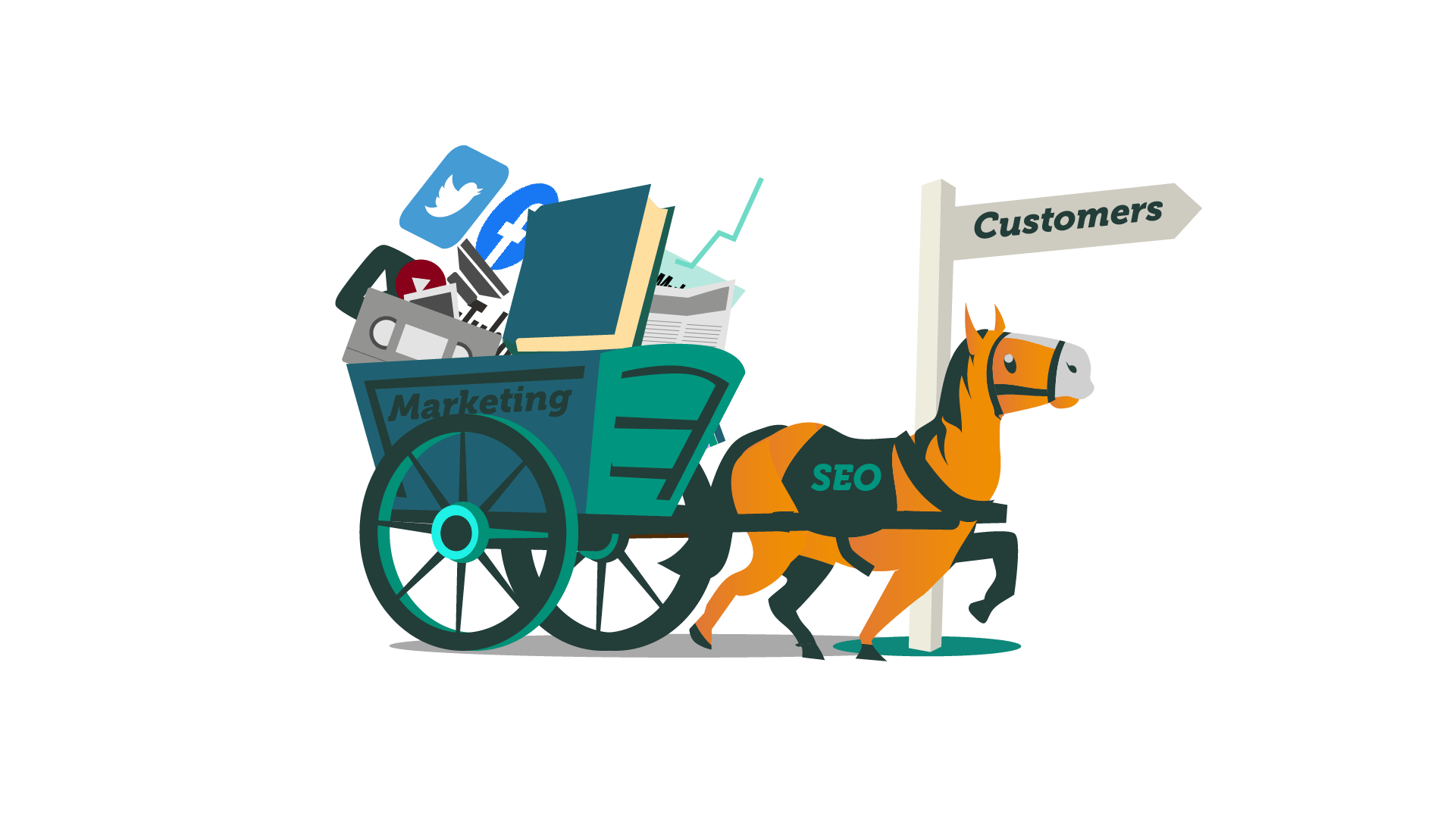
Improve your SEO by building great content, using relevant keywords and then backlinking activities to get your website climbing up those all-important search engine rankings.
PPC
Pay-per-click is one of the quickest best ways to attract visitors to your site. PPC involves paying for adverts strategically across search engines.
PPC is the quickest route to getting traffic via sites such as Google and Bing without having to spend loads of time creating content to try and climb up the organic rankings.
Most companies take a blended approach to PPC alongside their SEO and content marketing efforts.
Email marketing
Email marketing is an effective form of marketing and should form a major part of any business’ overall strategy.
It’s all about sending the right emails to the right people at the right time.
Email can be used for acquisition, in-life and renewals to dramatically increase new and additional sales.
Email marketing provides great ROI and can be automated and hyper-personalised to perfectly fit the replicant.
Social Media
No business, whether a one-man band or a multinational brand, can afford to ignore the power of social media.
But it’s about more than just putting up the odd post. What you need is a focused social media strategy that works in tandem with your overall content marketing plan.
Website Conversion
Don’t forget that all marketing activities eventually send people to a website.
A well designed, easy to read website that people can navigate easily is therefore paramount.
Great content presented in a way which works seamlessly for your brand will naturally convert your marketing efforts into sales.
Marketing and sales – two peas in a pod
To generate traffic, leads and a long line of returning customers, marketing and sales need to be seen as the same end-to-end process.
Getting visitors to your website is one thing, converting them into customers is another.
Whether it’s making informing, educating, selling or filling out a form, guiding your customers through a conversion funnel can be tricky.
Especially if you are not taking the value approach we have already discussed.
Conversion = building relationships
Turning visitors into sales is like building relationships in any walk of life.
Just as you wouldn’t marry someone as soon as you first met them, just because they asked. You’d get to know them first, right?
Furthermore, I hope you would be even less likely to marry someone if they held 15 signs shouting MARRY ME from different angles whilst wearing a technicolour dream-coat.
Off-putting, isn’t it?
Marketing is the same process.
That’s why is so important to have developed a customer focused relationship before the point of purchase.
It’s about building conversations – great marketing is about CARING and behaving accordingly.
It’s about choosing the right time to propose.
Relationships take time and are built over a lot of interactions that develop value and trust.
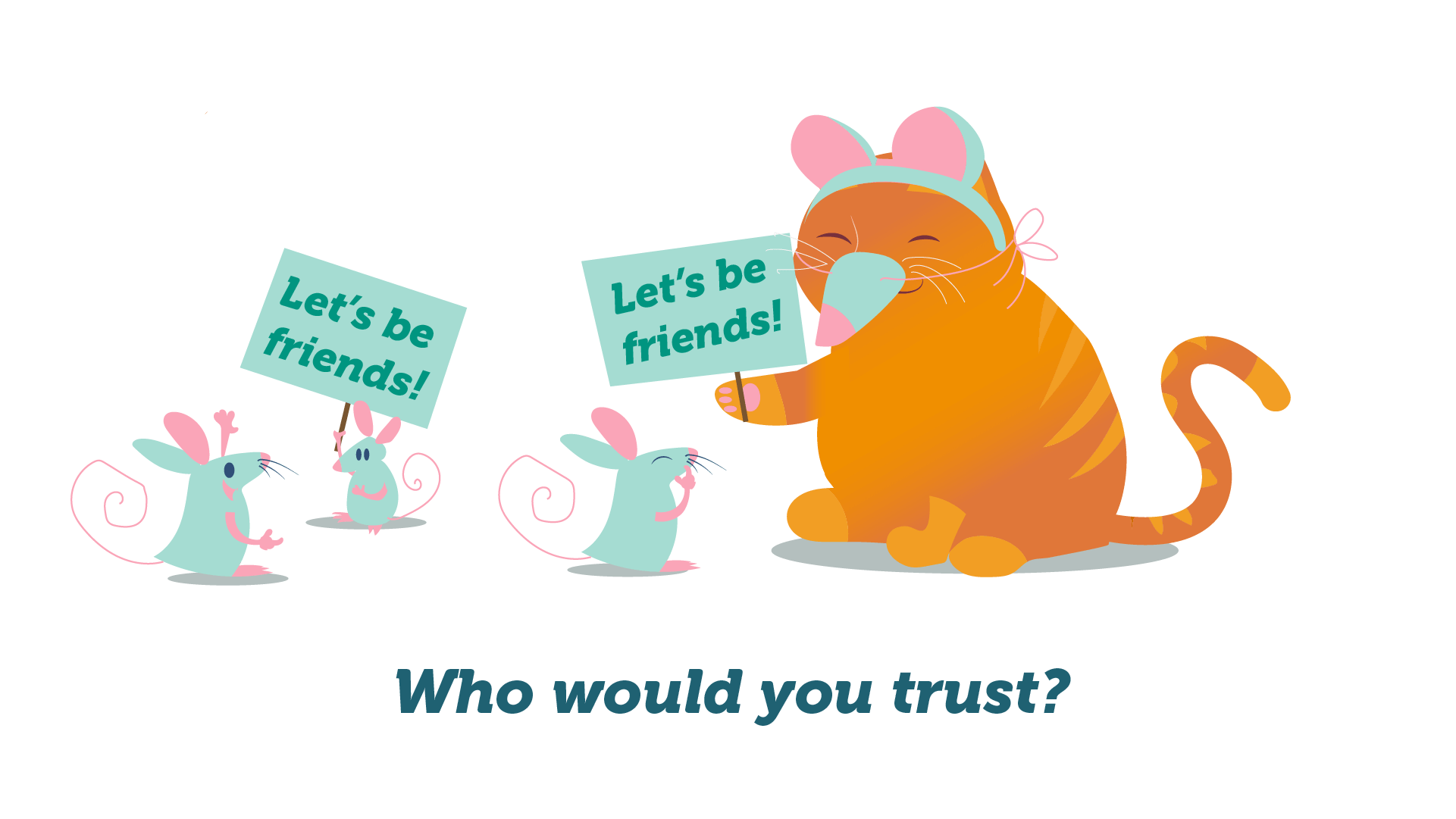
The art of good marketing - persuade don’t push
“Leadership is the art of getting someone else to do something you want done because he wants to do it.” – Dwight Eisenhower
Dwight Eisenhower is renowned for having had great insight into human nature and social behaviour – this is the perfect quote to bear in mind when thinking about effective marketing.
Think about this every time you think about starting your next campaign, it might save you a lot of time.
Having the right customer relationship
If you’re doing things in the right way, you’ll already have the full attention of your customer and the sale is simply a natural, unforced conclusion to the story.
Thinking about the long-term relationship is also important in terms of repeat business.
The more value you can give, the more likely it is that you’ll attract repeat sales which in turn, will build your much deserved brand loyalty.
Bring your A game
Keep in mind you want to be the best, rather than one of many.
You also should present your content in your way, giving your content a personality that is hard to replicate’
Providing the best answers to your buyers’ questions and telling a story that the customer wants to hear at the same time is the way to do this.
The art of selling online is the ability to educate.
Great marketing is about taking the buyer on a journey towards fixing their problem, so they see for themselves that you have their best interests in your heart.
Building the right marketing strategy for your business
Every business is unique and requires their own strategy.
So, rather than providing you with generic marketing advice which isn’t practical, I thought you would prefer an active example of how to build a strategy how it might apply to your business.
Meet Lulu.
Lulu’s plant-based cupcakes – the story
Lulu’s been growing her own veg since she and her family moved out of London to tranquil North Norfolk.
She had the idea of baking plant-based cupcakes when she wanted to encourage her kids to eat more veg.
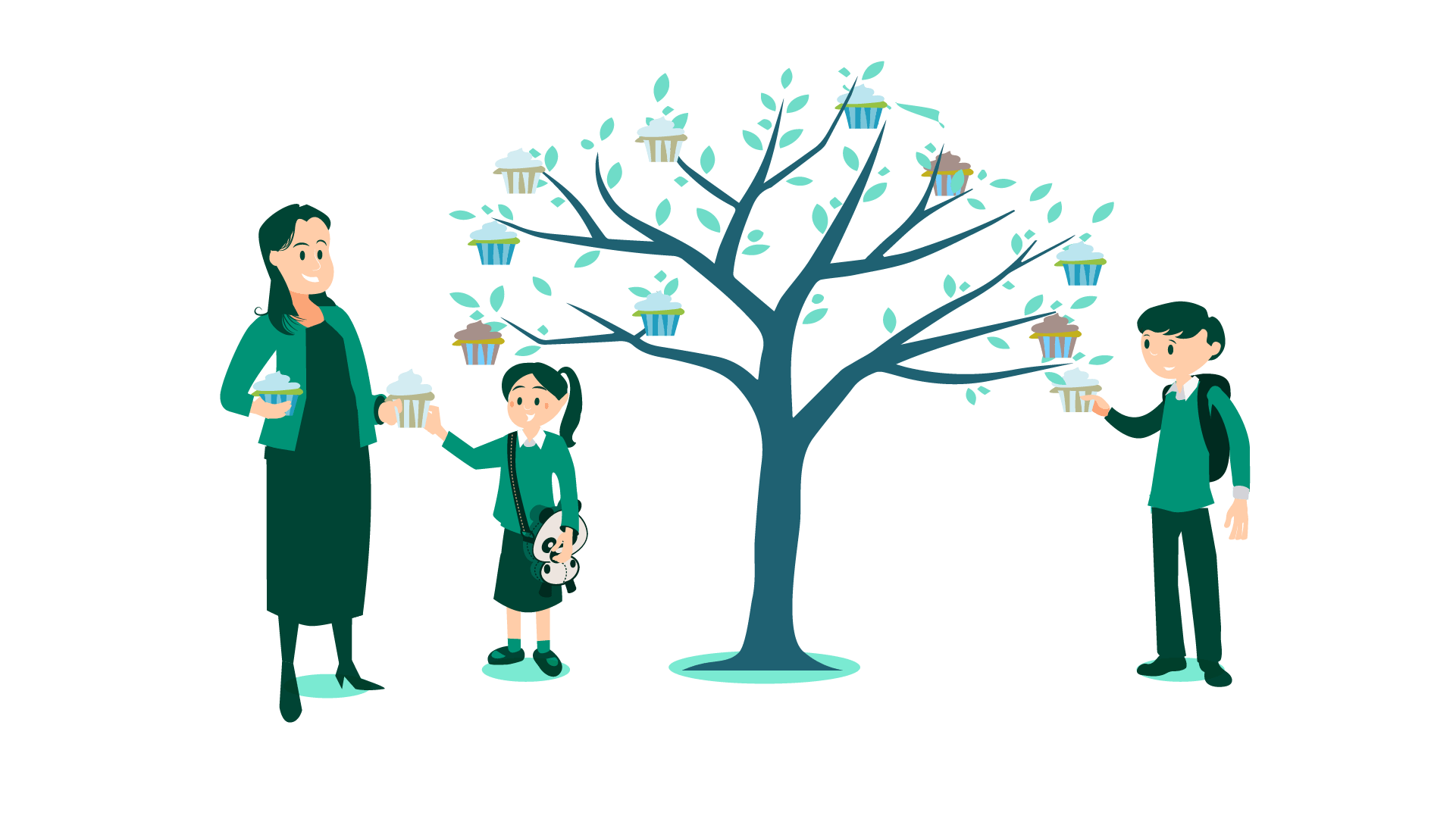
Bored of watching them push broccoli around their plates and chucking green beans under the table, Lulu decided to incorporate the nutritious greens into the beloved cupcake and see if she could get some goodness into them in a novelty way.
It worked.
The chocolate and beetroot cupcakes went down a treat, so much so that she now bakes, runs cookery classes for hen do’s and provides for small events and birthday parties.
Her cakes have quite a reputation amongst the school mums and Lulu now sees her kitchen industry as a lucrative career where she gets to be the boss again.
With the trend for veganism on the rise and parents wanting more tasty healthy options, Lulu believes her product is the best of its kind and answers a need for healthy, pretty-vegan treats.
She is determined to get her business working online and wants to get a website created that drives sales and profit.
Lulu is keen to expand her business to include larger orders and a bigger online presence, she’d like to get regular orders in for bigger parties, weddings and events and has ambitions to develop new relationships with local businesses too.
Ultimately, she wants to be the primary uk source of quirky plant-based cupcakes for anyone wanting something deliciously different, both across the county and wider afield but needs a bit of support and direction with the digital side of things
What might be a basic approach that Lulu might want to take to understand her product?
There are a few ways of doing this, but the simplest way to get started is to look at the marketing mix.
What is the marketing mix?
This is a strategy tool that has been around since the 1940s, there are more advanced approaches and tools you may want to use, but this will give you guidance as how you can use it for your business.
There are four main parts to look at: Product, Price, Place and Promotion.
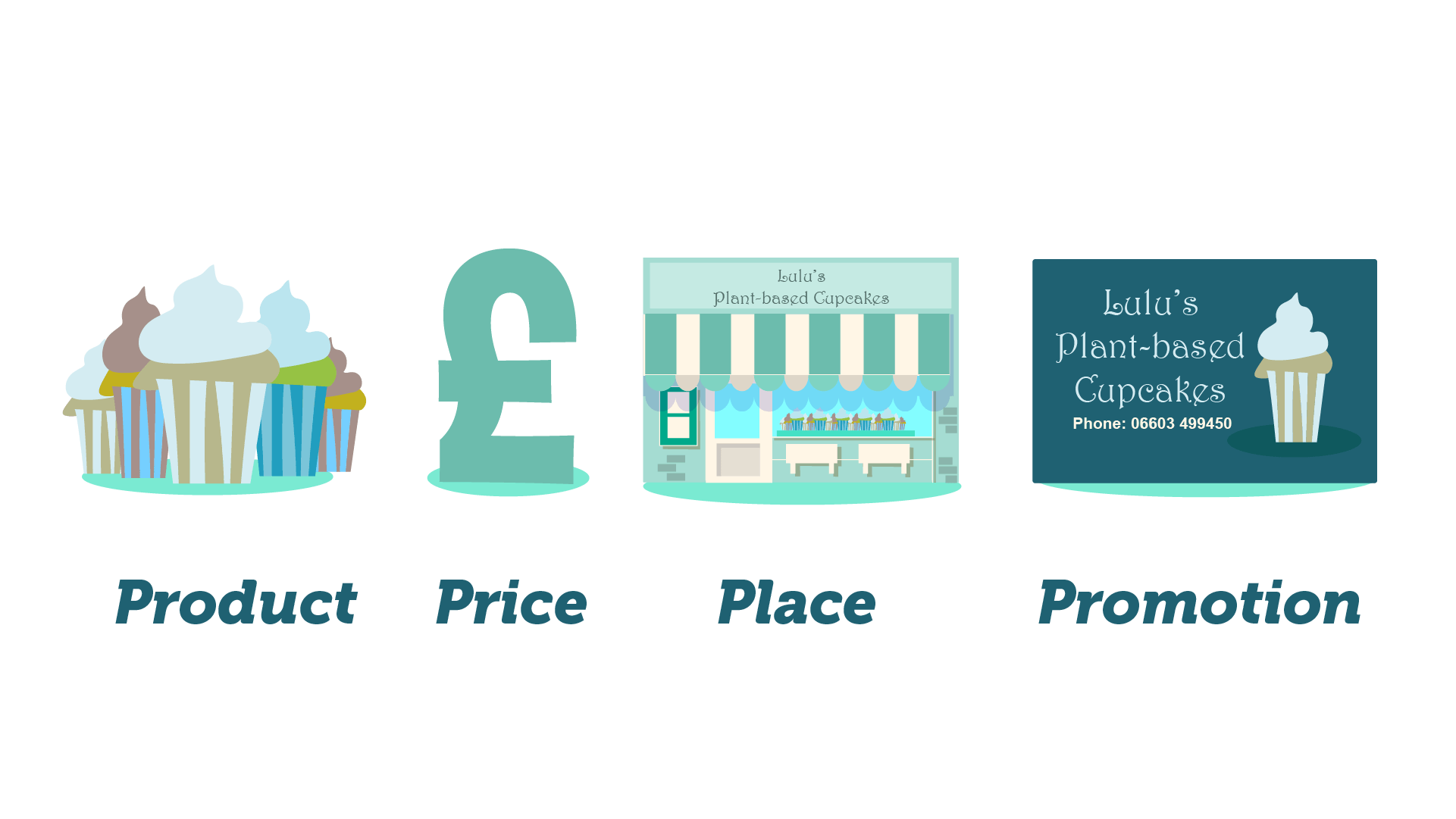
It is important to consider the marketing mix below as one way towards developing a marketing strategy which works best for your business:
Product / Consumer
- What need are you fulfilling for the consumer?
- Why should anyone care about what you have to offer?
It’s a given that everyone loves cupcakes. It is also true that loads of other companies also sell cupcakes too.
For Lulu, her cupcakes have these qualities:
- Super yummy
- 100% vegan
- Designed for kids
- Contain 2 of your 5 a day
- Are low sugar
- Come in eco packaging
- Are perfect for a treat on the go or for parties
- Quick delivery if local
I am sure you are already starting to visualise the kind of people that might be interested in Lulu’s product and the message which could connect with her audience.
Price / Cost
- What are you asking from the consumer?
- How much value do they get when they use your product or service considering the cost?
For example, Lulu’s cakes will be more expensive than buying them from a supermarket.
But the value comes from all the benefits associated with the product which a standard cupcake doesn’t offer.
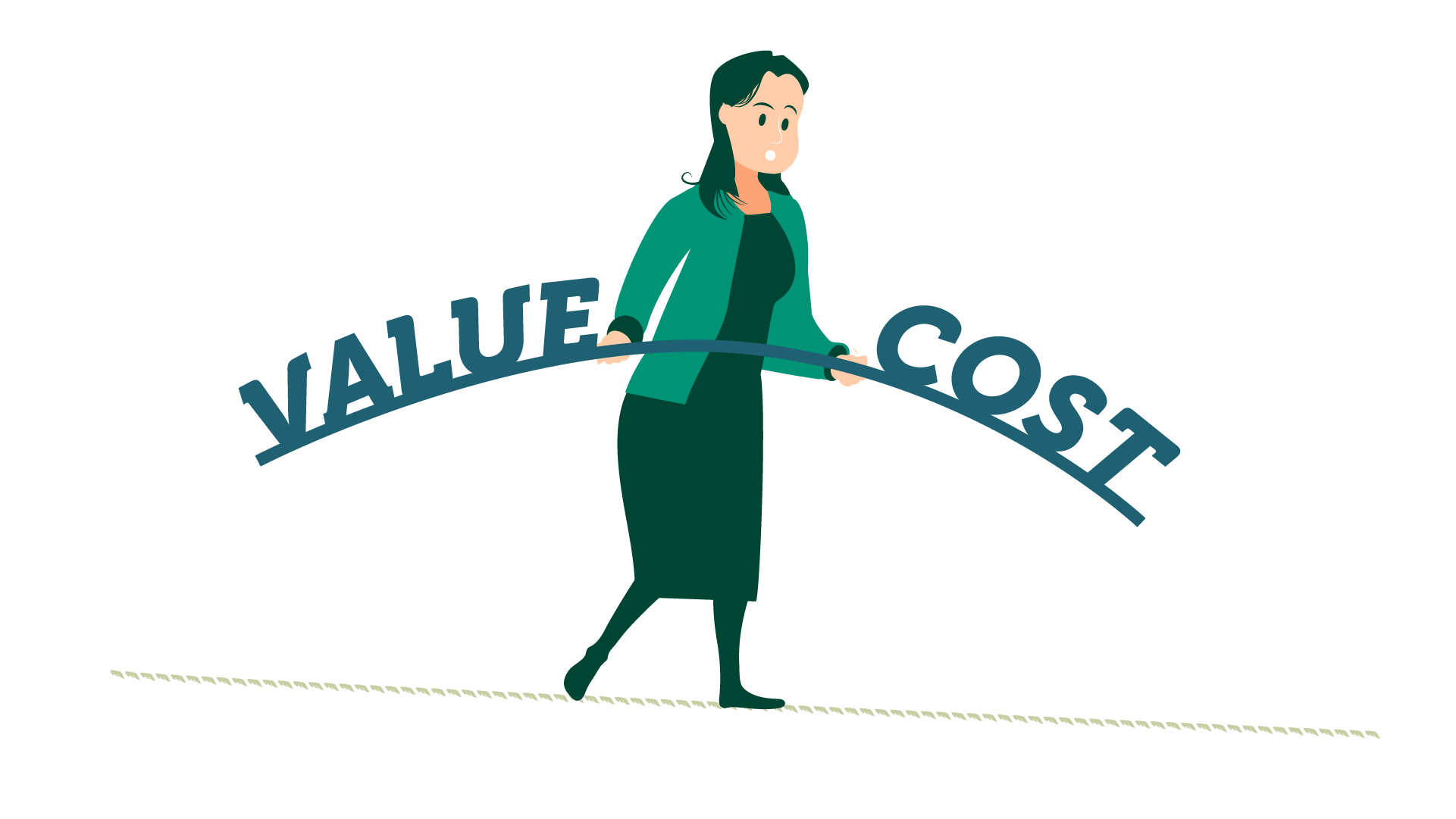
Lulu needs to hit a balance between being a premium product and a product that a mum might want delivered every week ready for the weekend.
Her cupcakes need to have a price relative to the value she is offering.
Place / Convenience
- How are you planning on selling your products or services?
- Are you choosing to sell from a digital platform or from a physical store?
- How easy is it for your customer to obtain or access your products or services?
These questions influence the type of marketing strategy you should take.
Lulu does all her baking from home, so she wants all her orders to be online she can focus her time on fulfilling orders.
Therefore, the questions Lulu should be asking are:
- How does she encourage people to order cupcakes from her website?
- How does she encourage repeat sales from those customers?
- How does she encourage big orders for parties and other groups?
- What do we need to do to get customers shopping with us?
- How do we create value for our customers?
- What messaging do we think will work best?
- Where do we need to do get the most amount of sales as little spend as possible?
After she knows her chosen setting, she can build a plan around it.
Lulu currently has a small business and she doesn’t have loads of money.
She needs a considered approach towards any marketing she wants to do.
She has lead and conversion (lead-to-sale) targets she wants to hit. She also has a CPA (cost per acquisition) in mind.
She will need to build a strategy to hit these targets and constantly review her marketing campaigns according to the targets originally set.
This is how she will understand if her marketing strategy has been successful or can be optimised further to get even better results.

Applying the marketing mix to your business
Use the marketing mix as the basis for a discussion about what you have to offer and why people should connect with your brand.
This exercise should help you to quickly find points of value about your business offering which may be relevant for your customers.
From this, you can start to build a marketing strategy around those values.
Remember, there might be loads of things you feel you want to talk about, but you have to decide what is relevant and then prioritise accordingly.
You can’t achieve everything, so plan as if you only had the option of focusing on one or two things really well.
Building a marketing strategy that kicks ass
By working up to this point, you should know what you want to sell and what your points of value for the customer should be.
From this you can build a marketing strategy which fits your product or service but crucially creates lasting value for your customers.
When you have the customers true value at the heart of everything you do, then your strategy becomes easier to create and much simpler to execute.
In other words, you know:
- What you are trying to achieve when you speak to your customers
- The connection you want to have
- The value you want to create
Preparation is everything
As Abraham Lincoln said – “give me six hours to chop down a tree I will spend the first four sharpening the axe.”
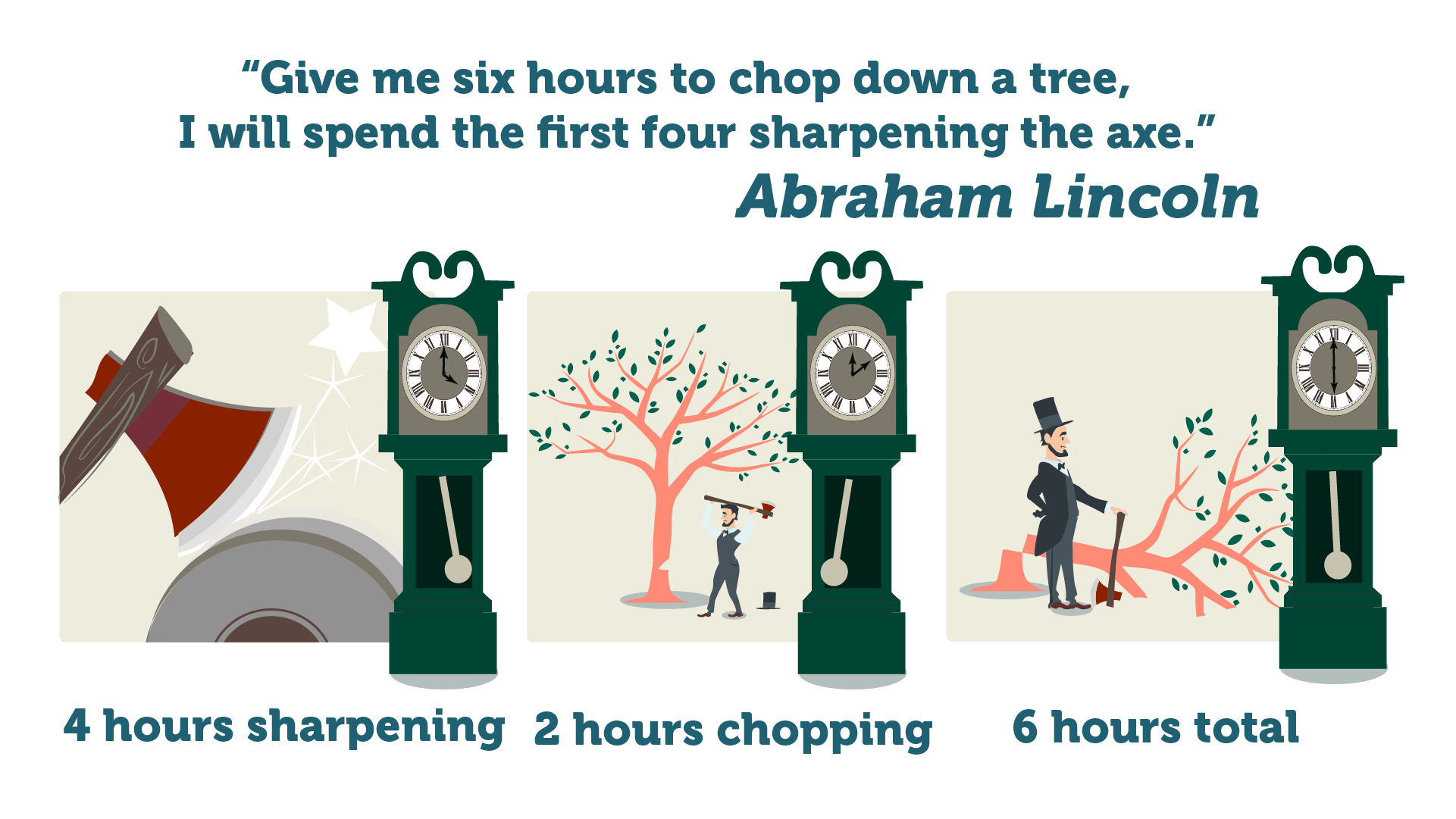
In the same way you need to plan and work out where you want to get to, what resources you have and how best to get to your destination.
There are so many things you can do, the trick is to block out the noise and only focus on the things of value.
Your strategy needs to be built in exactly the same way: Do less, but better.
Get your marketing strategy formed
A good marketing strategy is all in the planning – you’ll save time, money and effort if you plan properly and the whole process will feel easier.
Getting a decent strategy in place means you’re in control.
It should also stop you from being distracted by shiny new things which are ‘nice to have’ but are not core to growing your business.
Build a comprehensive plan which focuses on what you’ve learnt about your customer and the best approaches to connect with them.
Key steps you should consider when building your strategy
Luckily, Lulu is also on hand to consider these same points as she tries to build a perfect plan:
Goals
This is about gaining a understanding what you want to achieve in terms of leads and sales and how much time, cash and recourses you have to get there.
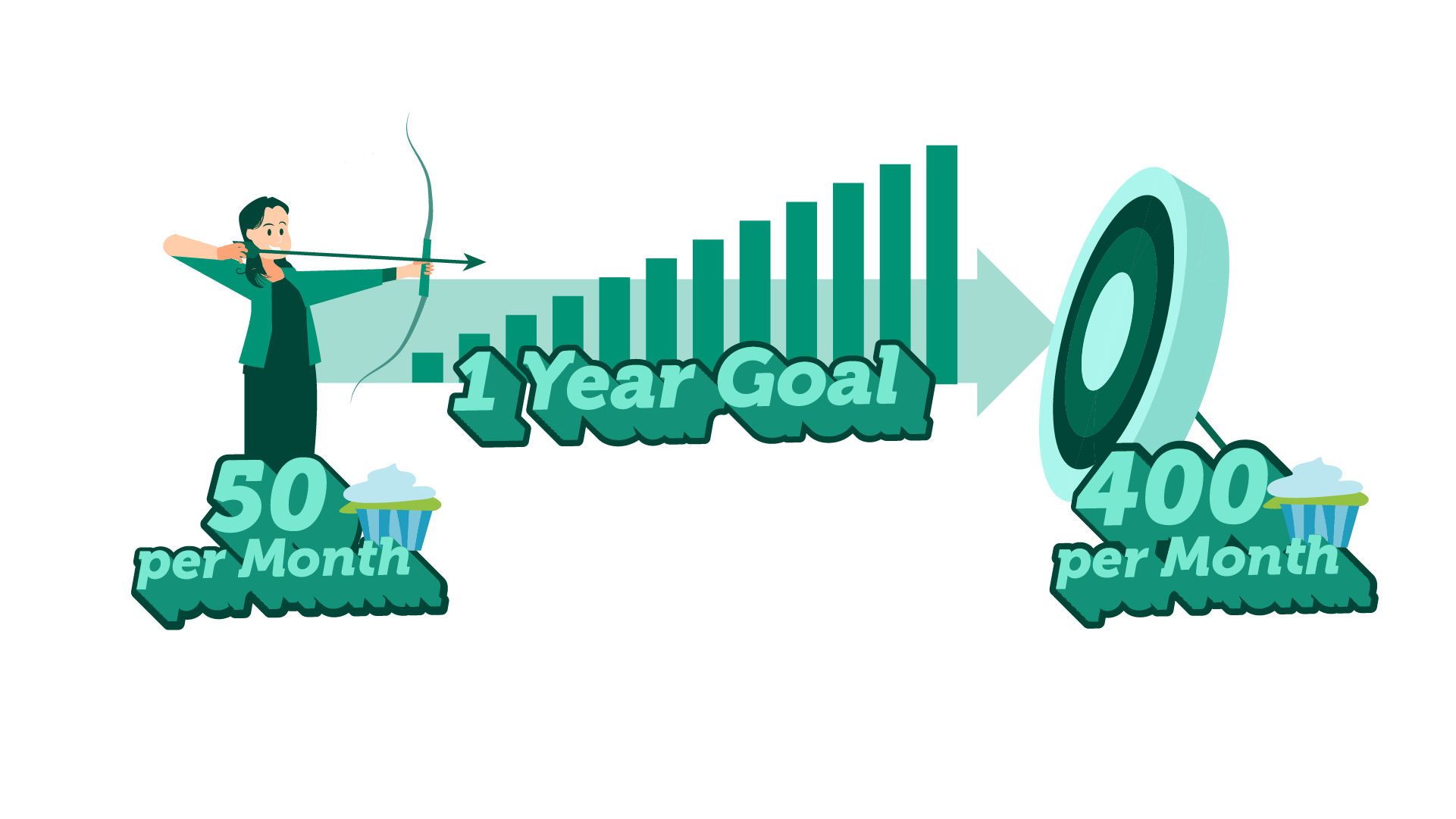 Example: Lulu wants to sell 50 cupcakes a month online within the first month. She then wants the ability to scale this up to 400 sales per month over the course of the year.
Example: Lulu wants to sell 50 cupcakes a month online within the first month. She then wants the ability to scale this up to 400 sales per month over the course of the year.
This target allows her to benchmark her plans accordingly.
This target will also allow her to quickly understand whether her activities are working.
Customer
Create a profile of your target audience – who are they, what their needs are and why they might purchase products or services from you.
In other words, we are trying to understand who are you creating value for.
Example: Lulu wants to speak to other mums.
She needs to consider what her chosen audience does, how they use their time and work out what is the best medium to communicate and create value for them.
She might decide that she wants to do some videos on the benefits of eating 5-a-day, or write a blog about ‘smart ways to get more vegetables in your child’s diet without them noticing’.
Notice that while these areas of focus are related to what Lulu sells, her priority is trying to work out how to create value for her target audience.
Customer
Create a profile of your target audience – who are they, what their needs are and why they might purchase products or services from you.
In other words, we are trying to understand who are you creating value for.
Example: Lulu wants to speak to other mums.
She needs to consider what her chosen audience does, how they use their time and work out what is the best medium to communicate and create value for them.
She might decide that she wants to do some videos on the benefits of eating 5-a-day, or write a blog about ‘smart ways to get more vegetables in your child’s diet without them noticing’.
Notice that while these areas of focus are related to what Lulu sells, her priority is trying to work out how to create value for her target audience.
Product
- what are you offering?
- What is the benefit to the customer?
- What are the USPs of your product or service?
- Why is it better than anyone else’s?
We’ve already covered this within the marketing mix, but you should now be looking at this from the perspective of creating value.
Example: If Lulu thinks that providing content about the best party games to play at a pirate themed birthday party, it might make sense for her to create some themed pirate cupcakes too.
In this case, Lulu might amend her product to be better related to the value she is looking to create.
After all, who isn’t going to want to have pirate cupcakes at a pirate party. Arrrrrrr!

Competition
Knowing your competition means you should understand:
-
- How they operate
- What campaigns they currently use
What is working best for them and why
Find their strengths and weaknesses
It is pointless to try and reinvent the wheel when you can simply see what others do well and then do it better.
Remember, Apple didn’t invent the phone, the mp3 player, the pedometer, GPS, text messaging or the internet. They just took those inventions and turned them into something better – the iPhone!
Example: Lulu can research what is working for Lulu’s local and national competitors.
Can she research her competition to work out what messages and products are already hitting well with her target audience?
Can she take influence from them and make something of even more value?
Position
- where does your product or service sit within the current market?
- What can you do to really make you stand out from the rest?
So many businesses say they are different, but the truth is they are all subtle variations on the same product.
With this in mind, how should you best position your business to really create the value your customers are looking for?
How do you be the difference they never knew they needed until they found you.
Example: Considering every other cupcake maker in the country, should Lulu be creating different flavours or different designs which makes her stand out from the competition?
Proposition
Working out the best way to speak to your target audience and stand out from the crowd sounds complicated, but it just a case of working out the best way of communicating and delivering the value they need in a unique and engaging way.
Focus on value, and your proposition will fall into place and a customer will quickly work out why they should buy or invest in your product or service.
Example: Lulu is planning to create lots of content focused on how to get kids to eat more veg and how to add even more grrrr to children’s parties.
Her customers will quickly work out that Lulu’s products are fun but healthy. They will also know where to go when they want more creative food ideas in the future.
Lulu’s proposition is clear to the customer – they know exactly what they are getting when they purchase her cupcakes online.
Message
- What is your key message?
- What message can set you apart from the rest?
- What message will resonate best with your audience?
Considering the content led approach, your message should simply be a distilled continuation of your value led proposition.
Example: Lulu might go for: ‘Fun, but healthy. Put the ‘Arrrrrr’ into your afternoon treats!’
Marketing advert example
Medium
- What do you think is the most effective way to market your product? E.g. a blog or video might be best?
- Which mediums are you going to use? One or several?
- How is the end-to-end process going to work?
- How are you going to measure performance?
Much like your message, pieces of this jigsaw should be falling into place as a logical extension of your drive for value.
Choose the right medium for your business and work out how best to test those mediums.
Example: Lulu wants to do some content marketing, using several social media channels but mainly Instagram to promote to her chosen audience.
She just needs to work out the when and how and she has her plan for growth in place.
Testing and learning
Everything you do should be measurable.
A test and learn approach will provide you with an easy way to measure if your campaigns are working as expected or need improvement.
A test and learn approach will also help you work out what you need to focus on next to increase the traffic and leads coming into your business.
Therefore, make sure you have key metrics for all of your campaigns, so you know what is working and more importantly, what is not.
Great marketing should always be continuously improving as you continue to refine what you do and provide more value.
We are always marketing, we are always selling, so do it with style
Marketing is fundamental to everything we do, both personally and commercially.
It pays to give marketing some real thought to ensure you are always providing value.
What is marketing?
Delivering value.
How best to do it?
Really caring about who you interact with.
Ultimately, you need to be better than anyone else in your market.
Achieve that, and everything else will fall into place.




